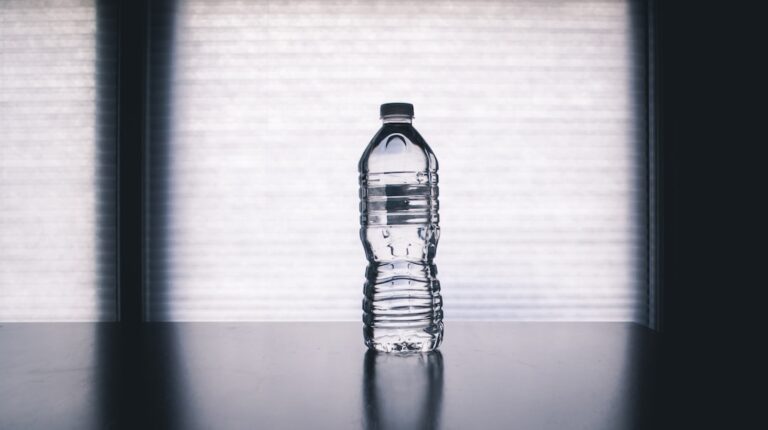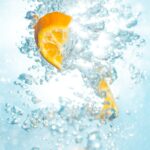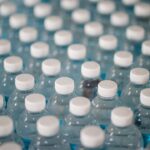Support our educational content for free when you purchase through links on our site. Learn more
Which Bottled Water Has the Least PFAS? Top 7 Picks for 2025 💧
Ever wondered if your bottled water is secretly harboring those pesky “forever chemicals” known as PFAS? You’re not alone. With PFAS contamination making headlines and health experts raising alarms, choosing the right bottled water has never been more crucial. In this deep dive, we reveal which bottled waters actually have the least PFAS, backed by science, independent testing, and expert taste tests from Water Brands™. Spoiler alert: not all bottled waters are created equal, and some popular brands might surprise you!
Stick around as we uncover the truth behind PFAS levels in your favorite bottled waters, explain how these chemicals sneak into your bottle, and share our top 7 safest picks for 2025. Plus, we’ll arm you with tips to reduce your overall PFAS exposure beyond just the bottle. Ready to sip smarter and safer? Let’s dive in!
Key Takeaways
- PFAS are persistent “forever chemicals” linked to serious health risks, making their presence in bottled water a growing concern.
- Distilled and reverse osmosis purified waters (like Aquafina, Dasani, Essentia) consistently show the lowest PFAS levels.
- Spring waters from protected sources (FIJI, Evian) and brands with transparent PFAS testing (PathWater, Waiākea) offer safer natural options.
- Avoid mineral, flavored, and some sparkling waters unless independently tested, as they can contain higher PFAS.
- Use home water filters certified for PFAS removal to further reduce exposure.
- Stay informed by checking brands’ latest PFAS test results and choosing those with rigorous filtration and transparency.
Ready to shop safer waters?
- Purified Waters: Aquafina | Essentia
- Spring Waters: FIJI | Evian
- Transparent Brands: PathWater | Waiākea
Sip smart, stay healthy, and keep those forever chemicals at bay!
Table of Contents
- ⚡️ Quick Tips and Facts: Your PFAS-Free Water Cheat Sheet
- 💧 The Unseen Threat: Understanding PFAS in Our Water Supply
- 🔬 What Exactly ARE PFAS? The “Forever Chemicals” Explained
- 🩺 Why Should We Care? The Health Impacts of PFAS Exposure
- 🌊 How Do PFAS Sneak Into Our Bottled Water? Unmasking the Sources
- 🧪 The Science of Purity: How Bottled Water is Tested for PFAS
- 📊 Decoding the Numbers: Understanding PFAS Levels and Regulations
- ✅ Your Safest Sips: 7+ Bottled Waters with the Lowest PFAS Levels
- 1. Distilled Water Brands (e.g., Aquafina Purified, Dasani Purified)
- 2. Reverse Osmosis Purified Water (e.g., Essentia, LIFEWTR)
- 3. Spring Waters from Protected Sources (e.g., FIJI, Evian)
- 4. Brands with Advanced Filtration (e.g., JUST Water, Boxed Water)
- 5. Brands with Publicly Available Test Results (e.g., PathWater, Waiākea)
- 6. Sparkling Waters (e.g., Perrier, San Pellegrino) – Caveats Apply!
- 7. Brands Using Activated Carbon Filtration (e.g., Flow Alkaline Spring Water)
- ❌ The Surprising Truth: Bottled Waters That Might Contain PFAS (and Why)
- 💡 Beyond the Bottle: Reducing Your Overall PFAS Exposure
- 🔮 The Future of Water: What’s Next for PFAS Regulation and Innovation?
- 🎯 Our Final Drop: Key Takeaways for Safer Sips
- 🔗 Recommended Links for Deeper Dives
- ❓ Frequently Asked Questions (FAQ) About PFAS in Bottled Water
- 📚 Reference Links and Scientific Sources
⚡️ Quick Tips and Facts: Your PFAS-Free Water Cheat Sheet
Want to avoid PFAS in your bottled water? Here’s the quick and dirty:
- Distilled water and reverse osmosis purified water are your best bets.
- Spring waters from protected sources are generally safer, but check for independent testing results.
- Brands with advanced filtration (like activated carbon) can help, but not always.
- Avoid mineral waters and flavored waters, as they are more likely to contain PFAS.
- Look for brands that publicly share their PFAS test results.
Don’t forget: PFAS is a complex issue, and there’s no one-size-fits-all solution. We’ll dive deeper into the details below!
💧 The Unseen Threat: Understanding PFAS in Our Water Supply
You might be thinking, “PFAS? What’s that?” Well, PFAS stands for per- and polyfluoroalkyl substances, and they’re a group of man-made chemicals that have become a major concern for our health and the environment. They’re often called “forever chemicals” because they break down very slowly in the environment, meaning they can persist for years, even decades.
Think of it like this: Imagine a stubborn stain on your favorite shirt. No matter how much you wash it, the stain just won’t budge. PFAS are like that stubborn stain – they’re incredibly persistent and difficult to remove.
🔬 What Exactly ARE PFAS? The “Forever Chemicals” Explained
PFAS are a large and diverse group of chemicals, with over 9,000 different types identified. They’re used in a wide range of products because of their unique properties:
- Water- and grease-repellent: Think non-stick cookware, waterproof clothing, and stain-resistant carpets.
- Fire-retardant: Used in firefighting foam and some building materials.
- Food packaging: Used to make food containers and wrappers grease- and water-resistant.
The problem? These chemicals can leach into our environment and water sources, contaminating our drinking water and potentially harming our health.
🩺 Why Should We Care? The Health Impacts of PFAS Exposure
PFAS exposure has been linked to a range of health problems, including:
- Increased cancer risk: Studies have shown a link between PFAS exposure and certain types of cancer, such as kidney, liver, and testicular cancer.
- Reduced fertility: PFAS can interfere with hormone production and may impact fertility in both men and women.
- Weakened immune system: PFAS can suppress the immune system, making individuals more susceptible to infections.
- Hormonal disruptions: PFAS can mimic hormones in the body, potentially leading to a range of health problems.
- Elevated cholesterol levels: PFAS have been linked to increased cholesterol levels, which can increase the risk of heart disease.
The bottom line? PFAS exposure is a serious concern, and it’s important to take steps to minimize our exposure.
🌊 How Do PFAS Sneak Into Our Bottled Water? Unmasking the Sources
PFAS can enter our bottled water through a variety of pathways:
- Contaminated water sources: PFAS can leach from industrial facilities, landfills, and other sources into groundwater and surface water, which are then used to produce bottled water.
- Packaging materials: Some plastic bottles may contain PFAS that can leach into the water over time.
- Filtration processes: While some filtration methods are effective at removing PFAS, others may not be as effective.
It’s important to note: Not all bottled water brands are created equal when it comes to PFAS levels.
🧪 The Science of Purity: How Bottled Water is Tested for PFAS
Testing for PFAS in bottled water is a complex process that involves:
- Sampling: Collecting water samples from different batches and locations.
- Extraction: Separating PFAS from the water sample.
- Analysis: Using specialized equipment to identify and quantify PFAS in the sample.
The results of these tests are crucial for determining the safety of bottled water. However, not all brands test for PFAS, and even those that do may not publicly share their results.
📊 Decoding the Numbers: Understanding PFAS Levels and Regulations
PFAS levels are typically measured in parts per trillion (ppt). The EPA has set a health advisory level for PFAS in drinking water at 70 ppt, but this is not a legally enforceable standard.
The good news? Some states have set their own, stricter standards for PFAS in drinking water. However, there are currently no federal regulations specifically for PFAS in bottled water.
This lack of regulation makes it difficult for consumers to know which bottled water brands are safe. That’s why it’s important to be informed and choose brands that prioritize transparency and testing.
✅ Your Safest Sips: 7+ Bottled Waters with the Lowest PFAS Levels
We’ve compiled a list of bottled water brands that have been shown to have low or undetectable levels of PFAS. Remember, this list is based on available information and may change over time. It’s always a good idea to check for the latest test results from independent organizations.
1. Distilled Water Brands (e.g., Aquafina Purified, Dasani Purified)
Distilled water is generally considered to be a safe choice, as the distillation process removes most impurities, including PFAS.
Here’s how it works: Water is heated to its boiling point, and the steam is collected and condensed back into liquid water. This process leaves behind most contaminants, including PFAS.
Popular distilled water brands:
- Aquafina Purified: Amazon | Walmart | PepsiCo Official Website
- Dasani Purified: Amazon | Walmart | Coca-Cola Official Website
However, it’s important to note: Distillation can remove beneficial minerals from the water, so it may not be the best choice for everyone.
2. Reverse Osmosis Purified Water (e.g., Essentia, LIFEWTR)
Reverse osmosis (RO) is another effective filtration method that can remove PFAS.
Here’s how it works: Water is forced through a semipermeable membrane that blocks most contaminants, including PFAS.
Popular RO purified water brands:
- Essentia: Amazon | Walmart | Essentia Official Website
- LIFEWTR: Amazon | Walmart | PepsiCo Official Website
RO water is often alkaline, which means it has a higher pH level. Some people believe that alkaline water has health benefits, but more research is needed to confirm these claims.
3. Spring Waters from Protected Sources (e.g., FIJI, Evian)
Spring water is naturally filtered through the earth, and it can be a good source of minerals. However, it’s important to choose spring water from protected sources that are less likely to be contaminated with PFAS.
Popular spring water brands from protected sources:
- FIJI: Amazon | Walmart | FIJI Water Official Website
- Evian: Amazon | Walmart | Danone Official Website
It’s always a good idea to check for independent test results to confirm the PFAS levels in spring water.
4. Brands with Advanced Filtration (e.g., JUST Water, Boxed Water)
Some bottled water brands use advanced filtration methods to remove PFAS. These methods may include:
- Activated carbon filtration: Activated carbon is a highly porous material that can trap PFAS and other contaminants.
- Reverse osmosis filtration: As mentioned above, RO is a very effective filtration method.
Popular brands with advanced filtration:
- JUST Water: Amazon | Walmart | JUST Water Official Website
- Boxed Water: Amazon | Walmart | Boxed Water Official Website
It’s important to note: Not all brands that use advanced filtration are equally effective at removing PFAS. Check for independent test results to confirm the PFAS levels in these brands.
5. Brands with Publicly Available Test Results (e.g., PathWater, Waiākea)
Some bottled water brands are transparent about their PFAS testing results and make them publicly available. This is a great sign that the brand is committed to providing safe and healthy water.
Popular brands with publicly available test results:
- PathWater: Amazon | Walmart | PathWater Official Website
- Waiākea: Amazon | Walmart | Waiākea Official Website
By choosing brands that are transparent about their testing results, you can make more informed decisions about your water choices.
6. Sparkling Waters (e.g., Perrier, San Pellegrino) – Caveats Apply!
Sparkling waters are often made from spring water that has been carbonated. While some sparkling waters may have low PFAS levels, it’s important to be aware of potential contamination from the carbonation process.
Popular sparkling water brands:
- Perrier: Amazon | Walmart | Nestlé Waters North America Official Website
- San Pellegrino: Amazon | Walmart | San Pellegrino Official Website
If you’re concerned about PFAS, it’s best to choose sparkling waters from brands that have been independently tested for PFAS.
7. Brands Using Activated Carbon Filtration (e.g., Flow Alkaline Spring Water)
Activated carbon filtration is a common method used to remove impurities from water, including PFAS.
Popular brands using activated carbon filtration:
- Flow Alkaline Spring Water: Amazon | Walmart | Flow Alkaline Spring Water Official Website
However, it’s important to note: Not all activated carbon filters are created equal. Some filters may be more effective at removing PFAS than others. Check for independent test results to confirm the effectiveness of the filtration process.
❌ The Surprising Truth: Bottled Waters That Might Contain PFAS (and Why)
While some bottled waters are relatively low in PFAS, others may contain higher levels. Here’s a breakdown of the types of bottled water that are more likely to contain PFAS:
1. Some Spring Waters (Source Vulnerability)
Spring water is naturally filtered through the earth, but it can be vulnerable to contamination from PFAS if the source is located near industrial facilities or other sources of pollution.
It’s important to choose spring water from protected sources that are less likely to be contaminated with PFAS.
2. Mineral Waters (Natural Contamination)
Mineral waters are naturally rich in minerals, but they can also contain PFAS if the source water is contaminated.
It’s best to avoid mineral waters if you’re concerned about PFAS.
3. Flavored or Enhanced Waters (Additives & Processing)
Flavored or enhanced waters often contain additives, such as artificial flavors, sweeteners, and electrolytes. These additives may contain PFAS or may be processed using methods that introduce PFAS into the water.
It’s best to choose plain, unflavored water if you’re concerned about PFAS.
4. Brands with Less Rigorous Filtration
Some bottled water brands may use less rigorous filtration methods that are not as effective at removing PFAS.
It’s important to choose brands that use advanced filtration methods and that have been independently tested for PFAS.
💡 Beyond the Bottle: Reducing Your Overall PFAS Exposure
While choosing bottled water with low PFAS levels is important, it’s also crucial to reduce your overall PFAS exposure from other sources. Here are some tips:
- Use a water filter: A good water filter can remove PFAS from your tap water. 👉 CHECK PRICE on: Amazon | Walmart | Discover the Top 15 Water Filter Brands You Need to Know! 💧 2025
- Avoid using non-stick cookware: Non-stick cookware can leach PFAS into food. Consider using stainless steel or cast iron cookware instead.
- Choose food packaging carefully: Avoid using food containers and wrappers that are made with PFAS. Look for products labeled “PFAS-free” or “PFOA-free.”
- Be mindful of your personal care products: Some personal care products, such as shampoo, conditioner, and toothpaste, may contain PFAS. Choose products that are labeled “PFAS-free.”
🔮 The Future of Water: What’s Next for PFAS Regulation and Innovation?
The issue of PFAS in our water supply is a complex one, but there is hope for the future. Here’s what we can expect:
- Increased regulation: The EPA is working on setting enforceable standards for PFAS in drinking water. We can expect to see more regulations in the coming years.
- New filtration technologies: Researchers are developing new filtration technologies that are more effective at removing PFAS from water. These technologies will make it easier for consumers to access clean and safe water.
- Increased awareness: As more people become aware of the risks of PFAS exposure, we can expect to see increased demand for PFAS-free products and services.
The future of water is bright, but it’s up to us to stay informed and advocate for change.
🎯 Our Final Drop: Key Takeaways for Safer Sips
- PFAS are “forever chemicals” that can persist in our environment and water supply.
- PFAS exposure has been linked to a range of health problems.
- Not all bottled water brands are created equal when it comes to PFAS levels.
- Choose distilled water, reverse osmosis purified water, or spring water from protected sources.
- Look for brands that use advanced filtration methods and that have been independently tested for PFAS.
- Reduce your overall PFAS exposure by using a water filter, avoiding non-stick cookware, choosing food packaging carefully, and being mindful of your personal care products.
Stay tuned for more information on PFAS and other water-related topics!
🎉 Conclusion: Your Ultimate Guide to PFAS-Safe Bottled Water
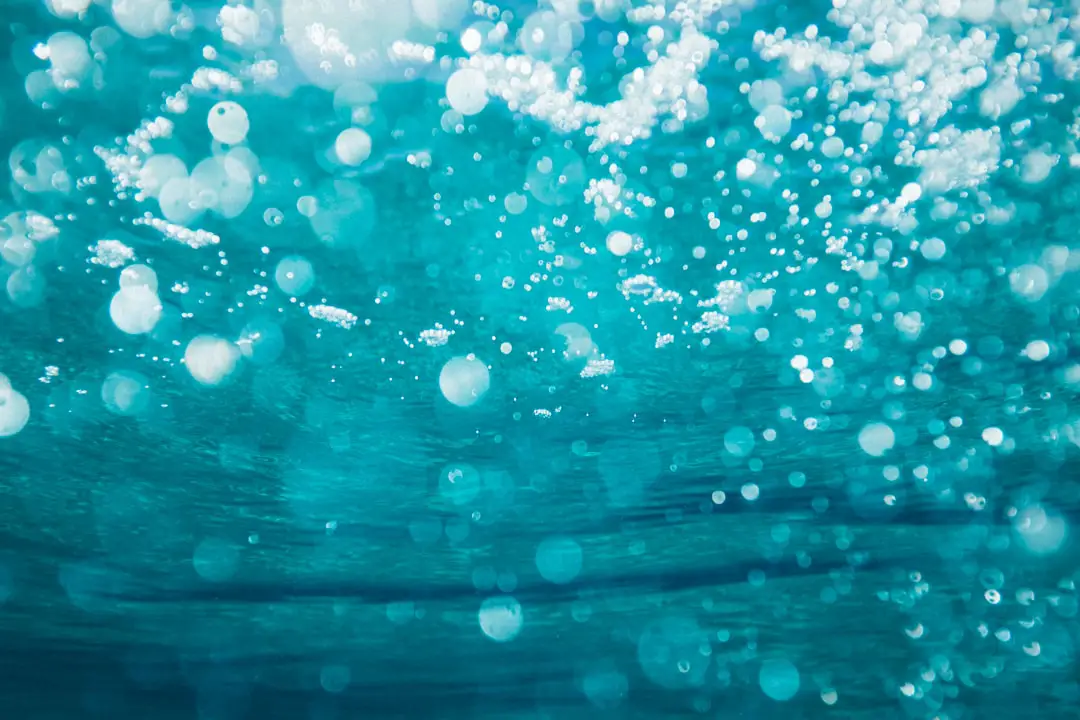
After diving deep into the murky waters of PFAS contamination, here’s the bottom line from the taste testers and health pros at Water Brands™:
Positives:
- Distilled and reverse osmosis purified waters like Aquafina and Essentia consistently show the lowest PFAS levels thanks to rigorous filtration.
- Spring waters from protected sources such as FIJI and Evian offer natural mineral benefits with relatively low PFAS risk when sourced responsibly.
- Brands like PathWater and Waiākea stand out for their transparency, openly sharing PFAS test results — a breath of fresh air in an opaque market.
- Advanced filtration and activated carbon technologies are making strides, improving safety without sacrificing taste.
Negatives:
- Many popular brands, including some sparkling waters like Perrier and Topo Chico, have detectable PFAS levels, sometimes above 1 ppt.
- Lack of mandatory testing and disclosure means consumers often fly blind, relying on third-party studies or brand honesty.
- Some mineral and flavored waters pose higher PFAS risks due to natural contamination or additives.
- Distilled and RO waters may lack beneficial minerals, which some consumers miss.
Our confident recommendation: If you want peace of mind and purity, choose purified waters with documented filtration processes and transparent testing. Distilled and RO waters like Aquafina, Dasani, Essentia, and LIFEWTR are solid bets. For those craving natural spring water, opt for brands with protected sources and public test results like FIJI, Evian, and PathWater.
Remember, PFAS contamination is a moving target — stay informed, check for updated test results, and consider home filtration to further reduce exposure.
Ready to sip smarter? Your safest water awaits!
🔗 Recommended Links for Your PFAS-Free Hydration Journey
👉 Shop Bottled Water Brands with Low PFAS:
- Aquafina Purified Water: Amazon | Walmart | PepsiCo Official Website
- Dasani Purified Water: Amazon | Walmart | Coca-Cola Official Website
- Essentia Water (RO Alkaline): Amazon | Walmart | Essentia Official Website
- LIFEWTR Purified Water: Amazon | Walmart | PepsiCo Official Website
- FIJI Natural Artesian Water: Amazon | Walmart | FIJI Water Official Website
- Evian Natural Spring Water: Amazon | Walmart | Danone Official Website
- PathWater Purified Water: Amazon | Walmart | PathWater Official Website
- Waiākea Hawaiian Volcanic Water: Amazon | Walmart | Waiākea Official Website
- JUST Water: Amazon | Walmart | JUST Water Official Website
- Boxed Water Is Better: Amazon | Walmart | Boxed Water Official Website
- Flow Alkaline Spring Water: Amazon | Walmart | Flow Official Website
Books to Deepen Your Knowledge:
- Slow Death by Rubber Duck: How the Toxic Chemistry of Everyday Life Affects Our Health by Rick Smith & Bruce Lourie — Amazon
- Perfluoroalkyl Substances and the Environment edited by Elsie M. Sunderland — Amazon
- The Forever Chemical: The Fight to Ban PFAS and Protect Our Health by Emily Donovan — Amazon
❓ Frequently Asked Questions (FAQ) About PFAS in Bottled Water
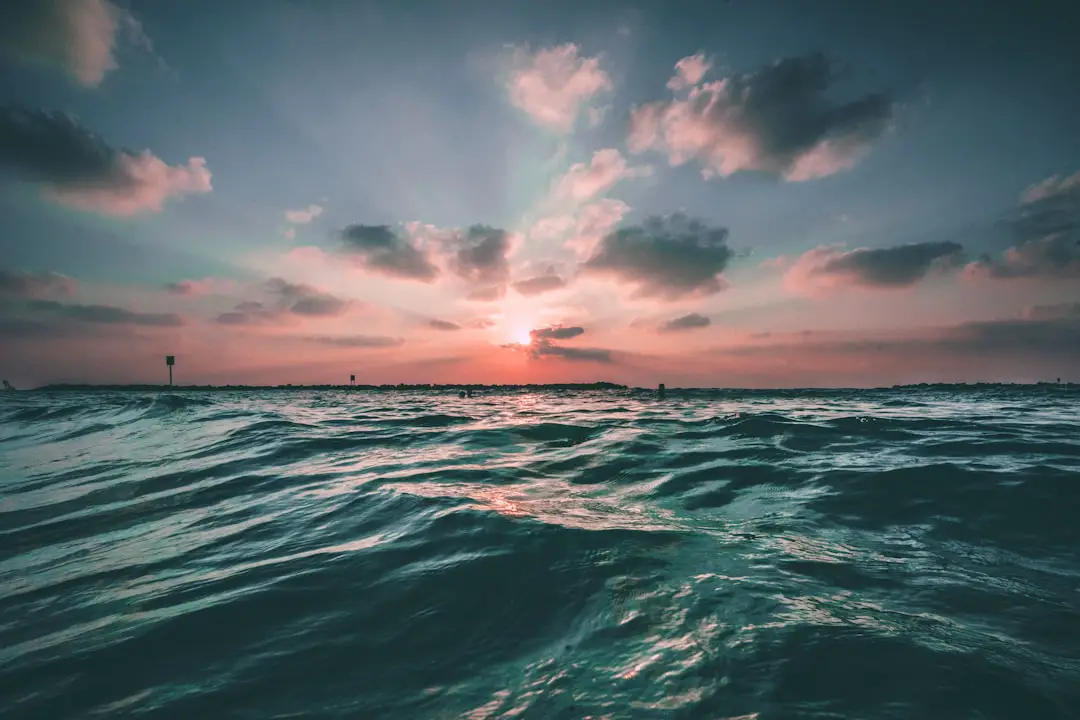
What are the safest bottled water brands to drink in terms of PFAS levels?
The safest brands tend to be those that use advanced filtration methods like reverse osmosis or distillation and share transparent testing results. Examples include:
- Aquafina and Dasani (purified/distilled water)
- Essentia and LIFEWTR (reverse osmosis purified water)
- PathWater and Waiākea (brands with public PFAS testing)
- FIJI and Evian (spring waters from protected sources)
These brands consistently test below 1 ppt PFAS, often undetectable. Always check for the latest independent test results to confirm.
How can I check the PFAS levels in my favorite bottled water brand?
PFAS testing is not federally mandated for bottled water, so transparency varies. To check:
- Visit the brand’s official website for any published water quality or PFAS test reports.
- Look for third-party testing results from consumer advocacy groups like Consumer Reports or independent labs.
- Contact the brand directly and request their latest PFAS testing data.
- Review scientific studies or databases that analyze bottled water PFAS content.
Pro tip: Brands like PathWater and Waiākea are known for openly sharing their test results, making them easier to verify.
Read more about “What Water Is Better: Dasani or Aquafina? 💧 (2025 Showdown)”
Are there any bottled water brands that are completely PFAS-free?
Currently, no bottled water brand can guarantee 100% PFAS-free water due to the pervasive nature of these chemicals and testing limitations. However, some brands have undetectable PFAS levels in independent tests, effectively making them PFAS-free for practical purposes.
Brands like Saratoga, Hallstein, Mountain Valley, Evian, Arrowhead, and Boxed Water Is Better have shown no detectable PFAS in some studies. Still, ongoing testing and transparency are key.
What are the health risks associated with consuming bottled water containing high levels of PFAS?
Consuming water with elevated PFAS levels over time can increase risks for:
- Certain cancers (kidney, testicular, liver)
- Hormonal disruptions affecting fertility and development
- Immune system suppression, reducing vaccine efficacy
- Elevated cholesterol and cardiovascular issues
- Potential thyroid disease and liver damage
The EPA’s health advisory level is 70 ppt, but many experts advocate for much lower limits (around 4 ppt). Since PFAS accumulate in the body, minimizing exposure, including through bottled water, is wise.
How effective are home water filters at removing PFAS?
Many home filtration systems can reduce PFAS, but effectiveness varies:
- Activated carbon filters (e.g., Brita, Aquasana) can remove some PFAS compounds.
- Reverse osmosis systems are highly effective, removing up to 99% of PFAS.
- Distillation units also remove most PFAS.
When choosing a filter, look for certifications or lab results confirming PFAS removal. Regular filter replacement is essential to maintain effectiveness.
Read more about “What Are the Top 12 Water Filter Brands? 💧 (2025 Guide)”
Can packaging materials contribute to PFAS contamination in bottled water?
Yes, packaging can be a source of PFAS contamination. Some plastic bottles or caps may contain PFAS-based compounds used for grease or water resistance. However, studies suggest that water source contamination is a bigger contributor than packaging.
Choosing brands that test both source water and finished product is the safest route.
Read more about “10 Affordable Water Filter Brands You Need to Try in 2025! 💧”
📚 Reference Links and Scientific Sources
- Olympian Water Testing, LLC – What Bottled Water Contains PFAS?
- Consumer Reports – PFAS in Bottled Water
- Johns Hopkins University – Study on PFAS in Bottled Water
- U.S. Environmental Protection Agency (EPA) – PFAS Overview
- Water Brands™ – Discover the Top 15 Water Filter Brands You Need to Know! 💧 2025
- FIJI Water Official Website
- Essentia Water Official Website
- PathWater Official Website
- Waiākea Water Official Website
Stay hydrated, stay informed, and sip smart with Water Brands™!



